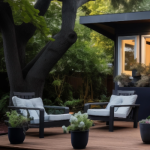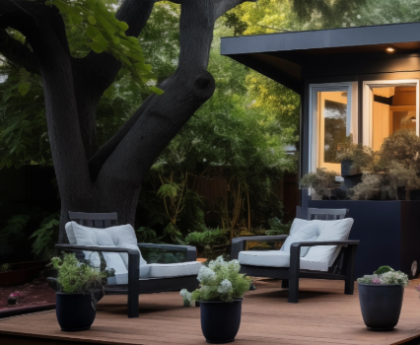
Accessory Dwelling Units (ADUs) are a big topic in housing circles right now, and for good reason. Amid an ongoing housing crisis that is demanding solutions, ADUs are seen as one of the tools in which to tackle it. They have been popular on the West Coast for some time, but they are starting to gain ground in states across the country as more municipalities look at how these kinds of housing units can help fill the void. While ADUs have historically been located in the backyards and additional land of single-family homes, they are beginning to pop up alongside multifamily properties as well. A handful of multifamily companies are trying out this configuration, and with more laws being implemented that allow ADUs, it could become something other firms will replicate.
ADUs, as the name implies, are accessories to an existing home in the form of an attached apartment or a smaller, detached home and are usually rental units. They’ve also been called granny flats, mother-in-law units, and carriage houses. These kinds of structures, often located in the backyard or in converted garages, were popular in the U.S. before World War II, but they fell out of popularity during the suburban flight that occurred after the war was over. In many places, zoning laws did not allow for adding separate structures on a property site. However, the benefits of having a potentially income-producing separate unit on a property became clear over the last decade as the housing crisis intensified. The ongoing crisis and the dire need for more affordable housing have led to more efforts by lawmakers and housing advocates to legalize and encourage the production of these kinds of properties.
Allowing these kinds of units not only helps ease the housing crisis by adding to the affordable housing stock but also gives owners an additional source of income. These kinds of housing units are not geared toward one demographic group in particular; in fact, households of all sizes and ages have looked kindly at ADUs, including seniors. The AARP, the nation’s largest nonprofit group that advocates for the interests of Americans over 50, has been highly involved in ADU efforts and sees the potential in them for helping seniors who want to age in place but struggle to afford it. “A.D.U.s are a really elegant solution to diversifying the choices that people have in housing,” said Danielle Arigoni, director of the AARP’s Livable Communities initiative, which supports efforts at the local and state level to be more livable and age-inclusive.
States across the country are adopting new rules and regulations around ADUs, most of which surround legalizing the structures in places that were previously zoned only for single-family homes. California has been at the forefront of the ADU movement, and its statewide legislation has been looked at as a model for other states. While ADUs are a very small part of the nation’s housing supply, they have boomed in California. In 2022, of all building permits issued in the state, 20 percent were for ADUs, according to the Department of Housing and Community Development. Outside of California, states including Connecticut, Maine, and New York have adopted or are experimenting with programs to expand these kinds of housing units. New York’s program even pays homeowners up to $125,000 to build an ADU in their backyard. But a new approach to ADUs has been gaining momentum too. Multifamily developers are starting to get in the game, adding ADUs to their existing properties.
Multifamily owner AvalonBay Communities, which has a sizable portfolio in Southern California with 18,000 units, is looking to create ADUs at some of their existing properties and so far has added 25 and is eyeing 200 more potential sites for these kinds of structures. It’s something the company said could eventually make an impact. “You add it all up, that’s more or less another community that we’re able to build out over time, but at no basis,” said William Lee, vice president of development at AvalonBay. Another California-based multifamily firm, CGI+ Real Estate Investment Strategies, is planning 13 ADUs at a 170-unit multifamily property it owns in Oxnard, California. Companies that specialize in building ADUs have picked up on the trend and offer their services to multifamily owners, too.
Otto, a Los Angeles-based company that offers a full-service approach to building ADUs for property owners, has ventured into the multifamily space. So has Villa, a prefab housing and ADU builder based in California. Villa has worked with some of the largest apartment owners in the country, REITs, and other investors.
ADU laws differ between cities and states, but in California, state law allows up to two detached ADUs per multifamily lot. These can be converted ADUs, which are created by converting existing nonresidential space, like parking or storage areas, into units, or new construction ADUs, which are built from the ground up on empty land. A new ADU law in California, AB 1033, went into effect at the beginning of this year, allowing homeowners to sell their ADUs independently like they might a condo. It’s a move toward what some have deemed as “gentle density” within single-family zoned neighborhoods.
The benefit for multifamily owners is turning unused space into an income-producing unit, which can help increase the overall property value. Unlike most development projects in many cities, including San Jose, ADU permitting is a fast-tracked process, with ADU projects going through a plan review and approval in just a few weeks. Additionally, by adding more units through ADUs, multifamily owners avoid paying for land or major new infrastructure. But there are drawbacks to these types of units. Many multifamily buildings that have added ADUs have had to take away parking in order to do so, and in California, all newly constructed ADUs—with the exception of those that are manufactured—must have solar panels installed. The unused space on multifamily properties that is typically where ADUs are built may not be the most ideal location for residents, and they could be limited to a certain square footage, potentially shrinking the pool of interested renters.
In California, apartment building owners can add at least 25 percent of the total number of existing units in the building. But in San Francisco, there is no cap on how many additional units can be built on a multifamily property, as long as they are code-compliant and the building already has five or more existing units. OpenScope Studio, a San Francisco-based architect firm, has worked on a number of projects where multifamily owners in San Francisco added ADUs to their properties. One of those was 2775 Market Street, a 26-unit apartment building in the city’s Castro District. The ground floor of the property was primarily used for parking, but with an abundance of public transit options located nearby, the garages were being underutilized. OpenScope designed a new plan that converted the underused space into six new apartments for a total of 3,224 square feet of additional residential space. As part of the project, the owner, Mosser Living, also added a new bike room and added landscaping.
Most people think of ADUs as small cottages in the backyard of single-family homes, but that is beginning to change as multifamily owners take advantage of the opportunity to add more housing to their properties. The evolution of ADUs into a potential solution to the housing crisis is one that faced the notoriously difficult task of disrupting single-family zoning laws. But as the battles that have played out across the country over changing zoning in neighborhoods to allow for more density are ongoing, ADUs have been looked at by many as a compromise. Now, as more states are adopting laws around the structures and more financing options are becoming available, apartment owners with extra space on their properties are in a good position to explore the possibilities of ADUs.



